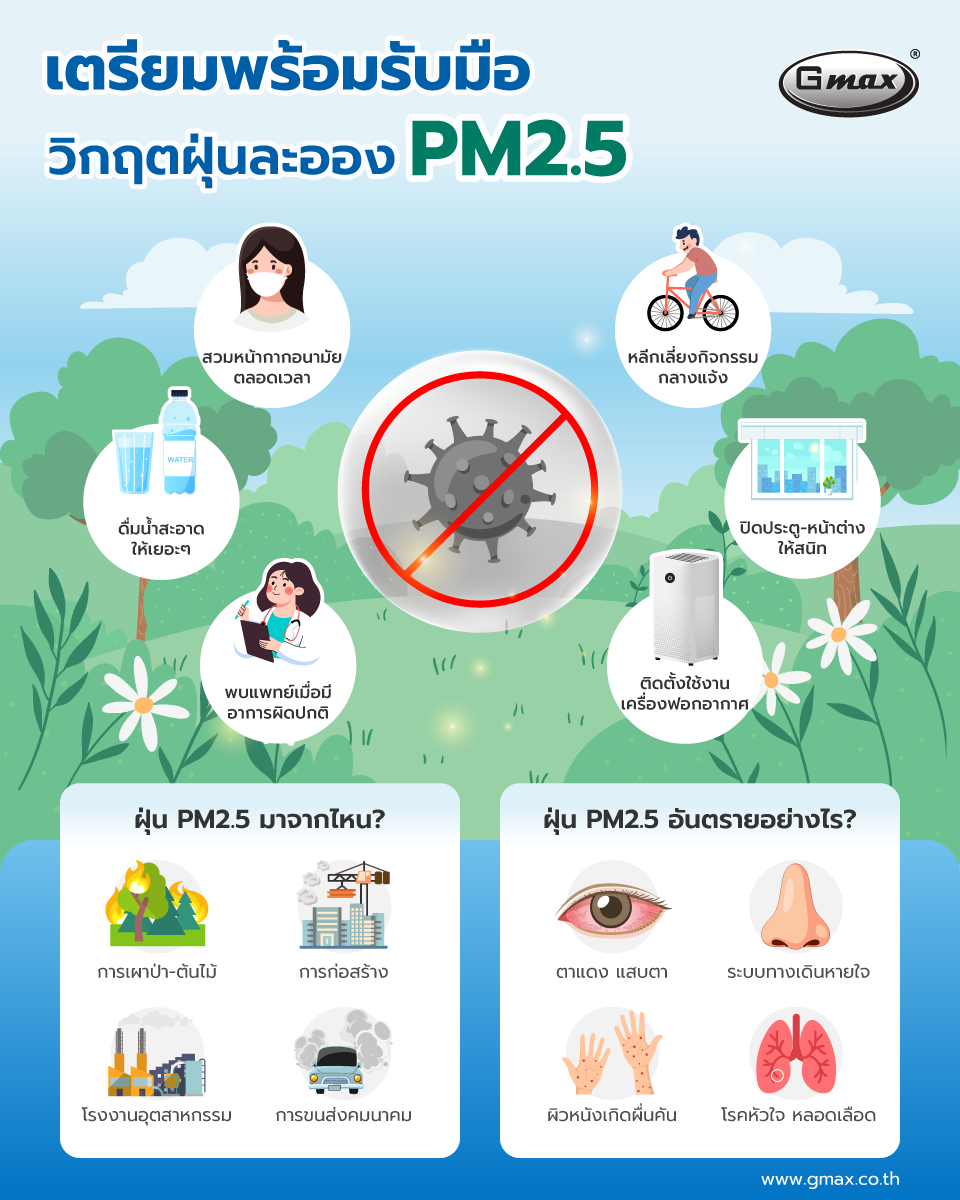Prepare to cope with the PM2.5 dust crisis
Preparing for PM2.5 dust is important to preserve our health and our families' long-term health. You should follow these tips to reduce potential health risks from PM2.5 dust. However, it is important to regularly check air data and assess risks for the best protection and care for our health. Dust PM2.5 (particulate matter 2.5) is a small particle with a diameter not exceeding 2.5 microns that can spread through the vehicle through the air. It filters through nasal hairs and enters the human respiratory system. This dust can come from many sources. The following are the sources of PM2.5 dust:

Where does PM2.5 dust come from?
- Burning forests and trees
Burning forests or trees creates a lot of PM2.5 dust as a result of deforestation or uncontrolled burning.
- Construction
construction activities that use construction materials and machinery that create PM2.5 dust during the construction process.
- Industrial plant
manufacturing processes in factories that may release chemicals and small particles into the air.
- Transportation
Transportation of vehicles on land, water, and air can create PM2.5 dust from oil combustion, road stability, and other cases.
How dangerous is PM2.5 dust?- Red eyes - eye pain
Eyes exposed to PM2.5 dust can cause red eyes and a burning sensation.
- Respiratory system
Absorption of PM2.5 dust into the lungs can cause respiratory problems such as coughing, snot, or pneumonia.
- Itchy skin rash
Contact with PM2.5 dust that is stuck on the skin can cause an allergic rash or itchy rash.
- Heart-vascular disease
PM2.5 dust can enter blood vessels. This puts you at risk for heart disease and blood clots.
How to prevent PM2.5 dust- Wear a mask at all times
Wearing a quality PM2.5 dust mask can help reduce exposure to harmful particles.
- Avoid outdoor activities
Avoid being outside buildings or areas with high dust levels, such as exercising in polluted places.
- Close doors and windows tightly
Close the doors and windows of the house tightly to prevent dust from entering the house or building.
- Drink lots of clean water
Drinking water helps wash away the risk of PM2.5 dust that may fall into the respiratory tract
- See a doctor when you have abnormal symptoms
If you have health-risk symptoms You should see a doctor for a proper diagnosis and treatment.
- Use an air purifier
Using a quality air purifier can help reduce PM2.5 dust in the air inside the home or building.


